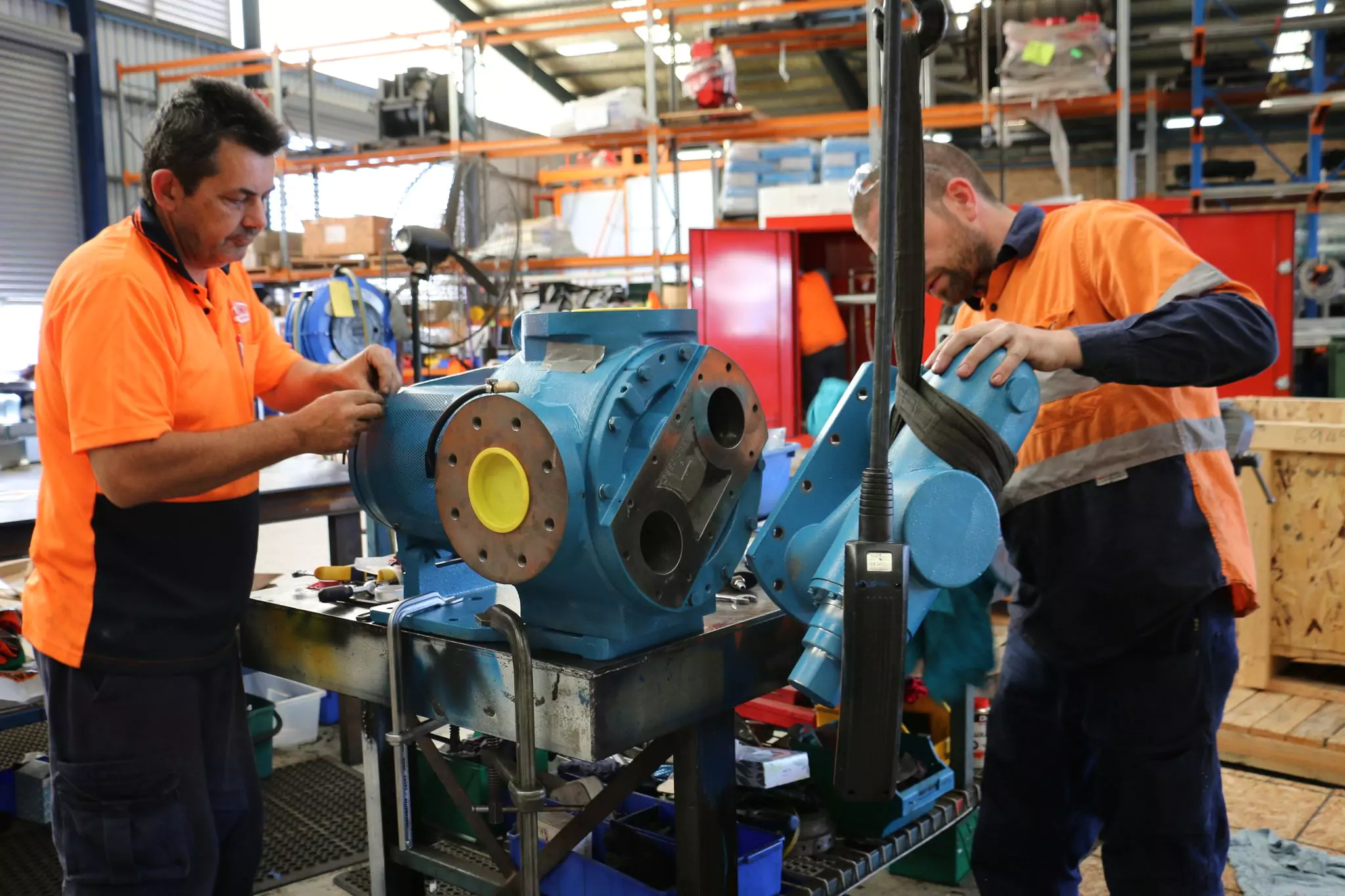Graco’s SaniForce sanitary piston pump sets a record for pumping 1500 kilograms of thick tomato paste in mere 10 minutes!
Tomato sauces are essential ingredients for many dishes cooked around the globe. In Italy, for instance, spaghetti using fresh tomato paste is a staple food of the country’s traditional cuisine. French fries of fast-food chains are never complete without ketchup. Burgers won’t taste any better without tomato sauce too. And with all the discovered health benefits of tomatoes, the tomato paste manufacturing industry has an important spot in the food sector.
However, the manufacture of tomato paste isn’t as simple as it seems. At least not in the transfer of tomato paste.
MAJOR CONCERNS IN UNLOADING TOMATO PASTE

Tomato paste has a standard viscosity that’s achieved by adding a starch-based thickener. This makes it extra difficult to handle the product when transferring from the processing area to the drums ready for bulk delivery or the silos for commercial use repacking.
Just imagine scooping tomato paste by hand from a 55-gallon capacity drum. If you are a large-scale tomato paste manufacturing company, unloading 20 or 30 drums manually per day proves exhausting and unproductive. Not only is this labor-intensive process inefficient, but unloading a 3-feet deep drum is also deemed not ideal for sanitary handling of a food ingredient. More surprisingly, though, high viscosity ingredients that are as sticky as tomato paste will not fill back when scooped.
Although there are dumping systems to substitute manual unloading, they still don’t prove to be the best way to handle tomato paste.
The reasons?
First, when using dumping systems, it cannot be avoided for the bulk of tomato paste to be exposed to airborne contaminants and can introduce bacteria to the product. Second, the weight of the drum and the paste can damage mixer blades or other equipment used in tomato paste processing.
From a safety standpoint, a heavy drum suspended in the air for unloading means a lot of weight over the workers and other equipment. This weight poses a potential danger that can inflict grave injury to workers or damage to costly equipment. Furthermore, there is a possibility for the dumping system to drop debris into the mixing kettle. So, even though the dumping system provides a faster way to unload tomato paste compared to manual scooping, it can introduce other issues into the tomato paste industry.
Then what’s the ideal way?
Still, the best way to fill and unload a tomato paste is by using proper transfer equipment. And nothing can beat a hygienic pump for the job.
HOW TO USE PUMPS IN TOMATO PASTE PROCESSING
Tomato paste industries have two ways they can use pumps for tomato processing. They include:
Pumps as Stand-Alone Unloading Equipment
Many types of pumps are used in the food industry. For hygienic and high viscosity handling, positive displacement pumps are recommended. While numerous factories use progressive cavity and rotary lobe pumps for food and beverage applications, the tomato paste industry can benefit from the excellent transfer capabilities of a piston pump.
For many years, positive displacement pumps have shown their ability to pump products without destroying their integrity, which is crucial in the food processing industry. While most PD pumps have sanitary features, piston pumps are known for their exceptional hygienic design by incorporating separators between the piston and the liquid chamber. This ensures minima to no contact between the product and the oil used by the pump.
Their flow rate handling capabilities can also be adjusted to thousands of liters per hour for fast fluid transfer. And to handle a wide range of high viscosity and shear sensitive products, piston pumps can withstand high-pressure drop.
Pumps as a Part of Container Unloading Systems
Container unloading systems still use pumps to transfer tomato paste into another container or station of the tomato processing plant. A ram system is used to feed the product into the stand-along pump without exposing it to airborne contaminants. This prevents the growth of bacteria in the tomato paste while being transferred.
Most container unloading systems in the food processing industry use a pneumatic piston pump that’s mounted on the ram plate that generates high outlet pressure required in moving higher viscosity materials. The advantage of using piston pumps in container unloading systems is that they are self-priming and can be run dry without damage. To speed things up, container systems can be fitted with multiple piston pumps to unload totes of tomato paste in just a few minutes. In fact, it was recorded that the Graco SaniForce’s four piston pump unloading system can unload over a thousand kilos of tomato paste in just ten minutes.
Download Brochure
CASE STUDY: GRACO SANIFORCE 2.0 BES FOR TOMATO UNLOADING
For decades, Graco has been supplying powerful piston pump unloading systems to different tomato paste processing facilities.
Here, we present to you a case study of a recently evaluated Graco SaniForce four piston pump system installed at Food Service Specialties (FSS) in Minnesota, USA.
Concern: Long and rigorous manual unloading of high viscosity ingredients used in cooking FSS products.
Food Service Specialties, a food processing company in Red Wing Minnesota, had to upgrade their unloading system to fulfil the increasing orders they are getting from their client restaurants, retail grocer partners, and frozen food customers.
The company used to depend on a two 2-piston pump Graco unloading system for unloading tomato paste and other dairy products. Their decision led them to streamline the unloading of materials and cut evacuation time down 20 minutes per 1000 liters tote. Since installation, FSS was able to unload 36,000 kilograms of tomato products on a daily basis. It is worth noting, though, that the process required at least one employee to move the drums in the facility, set up the unloading system, start the unloading, and remove the empty totes. Still, this could be considered a lot of work and time.
After 25 years of service, the already discontinued Senator piston pump systems that they have on-site finally began to break down. As the maintenance required became more frequent, manufacturing solutions provider Anderson Dahlen upgraded the old systems by installing two Graco SaniForce 2.0 Bin Evacuation System (BES).
Results:
Under operating conditions with a flow rate of 35 gpm, discharge distance of 40 feet, hose diameter of 4 inches, and material temperature of 40° F to ambient, the new system is able to achieve:
Faster Unloading Time and Higher Productivity Rate
The new Gracro SaniForce 2.0 BES uses 4-piston pumps with electronic Programmable Logic Contollers. Surprisingly, the new systems are able to cut the unloading time of 1500 kilograms of tomato paste in less than 10 minutes. From their usual unloading rate of 36000 kilograms of paste per day, FSS is now processing 45,000 kilograms of tomato per day (26 totes per day unloading rate).
The integration of Spec Engineering technology contributed to the reduced unloading time. Additionally, an I/O panel was installed into the Graco BES operator control station to streamline the system preparation and improve integration with the customer’s existing Clean-In-Place (CIP) regimen.
Enhanced Clean-in-Place Process
FSS said one employee usually takes up to five hours to clean their old Senator piston pump systems. With the new SaniForce 2.0 BES, the cleaning time has been reduced to three hours even after installing four additional pumps. This follows the good CIP capability of the SaniForce 2.0 BES.
Food Service Specialties Plant Manager Andy Ahern said about their decision to switch to the SaniForce 2.0 Bin Evacuation System:
“Graco Piston Pumps move tomato paste the best, we beat the hell out of the pumps and they work awesome.”
About Graco SaniForce 2.0 Bin Evacuation System:
Graco’s continuous effort to innovate sanitary pumps for the food processing industry birthed the SaniForce 2.0 Bin Evacuation System. This supersedes old and discontinued models like the Senator.
The new Graco unloading system serves as the world’s cleanest and most efficient method to unload food materials without risks of contamination or introduction to airborne bacteria.
Food factories can save money and time in their unloading process with the SaniForce 2.0 BES that can move highly viscous fluids with over 1,000,000 cps from 300-gallon bag-in-bin containers. This technology eliminates manual scooping and bin dumping for full unloading. The new system can wipe clean the entire drum without any human effort.
Graco SaniForce 2.0 BES Key features include:
- 99% evacuation rate
- Zero contamination with the exhaust routed away from the food product
- The inflatable seal improves retention in the plate and makes a much better seal for improved evacuation
- FDA-compliant
- Process automation
56-300 gpm - Simple knockdown design for easy cleaning and product changeover



